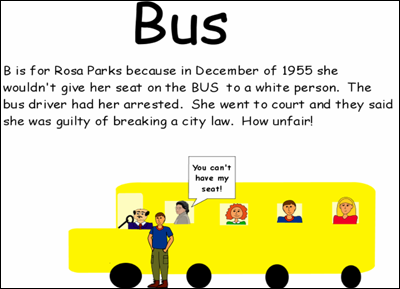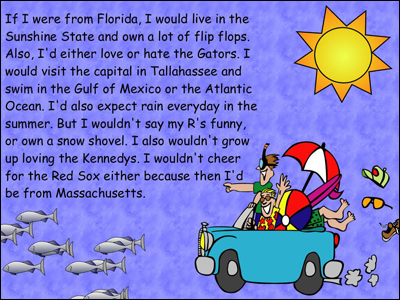
Infusing creativity across all levels of Webb’s Depth of Knowledge

In 1997, Norman Webb developed Depth of Knowledge (DOK) levels to help assessment creators evaluate the cognitive demand of questions and tasks in their assessments. With the Common Core’s focus on increased rigor, educators have found the system useful for analyzing and evaluating the cognitive complexity of instructional tasks.

Webb’s DOK includes four levels of cognitive complexity. You may see similarities between Webb’s DOK and Bloom’s taxonomy, but there is an important distinction: Bloom’s Taxonomy is intended to categorize educational goals, while Webb’s Depth of Knowledge is used to categorize how students think as they perform a task.
Rather than developing materials for just one level, the goal is to be aware of the depth of knowledge needed for your students to complete a range of instructional tasks. If all tasks are at the lowest level, students aren’t building critical thinking skills. Too many high-level tasks make it difficult to evaluate where student misconceptions lie and determine progress as opposed to achievement.
Students need to create to learn at all levels of thinking, but the act of creating isn’t justification to put a task at the highest level of either Bloom’s Taxonomy or Webb’s Depth of Knowledge.
Consider the topic of vocabulary. Students generally are asked to define a word and then use it in a sentence. In addition to being dull, such an exercise that only requires basic recall or copying and pasting; it’s stuck at DOK level 1.
Combining vocabulary with imagery has been shown by research to help with both recall and comprehension. Using a Frayer model graphic organizer adds a bit of thinking into the process by asking students to find and show characteristics and non-examples. Asking students to create a “Cool Word” where a supporting or defining image fills the word requires students to think about how a viewer has prior knowledge or a previous connection to the meaning of the word.

With just a few more adjustments, though, the end product can be changed to ensure that student work is more engaging and creative. For example, asking students to develop a Wanted poster for a vocabulary word or subject-specific term requires them to apply their knowledge of the definition and consider different ways the term might be used or encountered in the world beyond the classroom.
The rote thinking aspect of level 1 tasks does not mean the instructional task has to be boring. Level 1 tasks make great formative assessments, helping you quickly evaluate existing knowledge. Level 1 tasks can also be used to determine whether students are ready to engage with more complex ideas or apply knowledge to solve a problem.
As an example, consider illustrating word problems. While still a level 1 task, teaching students to visualize a word problem is a great tool. Visualization will help students decode and solve other word problems they encounter.

Showing off what they know through multimedia projects can be fun. For example, Kindergarten students show off their knowledge of one-to-one correspondence, ordinal numbers, and number words in this fun Halloween-themed project that also had them recording to practice oral fluency.
Michigan Media Specialist Liz Allen was tired of seeing informational projects full of content that had been copied and pasted from source materials. Liz started working with her teachers to “transform the end product of our assignments to increase engagement, encourage student learning, and avoid data dumping.”
At Level 1, students began creating products like Top 10 lists like they might have seen with their parents on Late Night with David Letterman. To help students and teachers make the transition to a more creative approach, they created ABC books, common to their school libraries, to demonstrate knowledge about a topic in alphabetical order.

Students also created mystery projects about places or people they were studying. These began as level 1 collections of facts, but ultimately grew into presentations where students combined the top ten countdown idea to begin to prioritize the facts. Students created a Wixie page for each fact and presented them from least telling to most telling, revealing knowledge in a way that required the audience to make interferences. This moved the cognitive complexity up to level 2.
Because level 2 activities require students to organize and apply information for understanding, they are helpful for assessing student comprehension of information. For example, rather than asking students to simply recall information about the characters, events, and setting in a story, ask them to demonstrate comprehension of character motivation and theme through the creation of a new book jacket design, a character scrapbook, or a trading card.

Creative projects are limited to literary texts. Liz Allen shares, “creativity depends upon what we ask students to do with the text once they’ve read it.”
If students are working with informational text, ask them to creatively demonstrate thinking about their content through an associative report organized around a specific letter. For example, students creating a report about Rosa Parks organized around the letter B might write “B is for Rosa Parks because she was brave when she would not budge from her seat.” This assignment encourages creative problem solving as students research words that contribute understanding about their topic’s importance and meaning.

Another idea that requires equally creative thinking is an If/But Comparative. In this project, students research and compare two topics and then write about their findings in terms of “If I were…” (person) or “If I visited…” (place) sharing facts about the first topic and then transitions into “But I would not…” transitioning into the contrasting examples from the second topic.

Another creative way to get students thinking about information about an animal, historic figure, or artifact is an interview. Creating interviews from research information requires students to order, arrange, prioritize, and combine. And since students will be writing in first-person style, they can’t simply copy and paste information…they must think about it and retell it in their own words.
There are also opportunities in math for creative application of understanding. When studying symmetry, for example, students are often asked to identify line(s) of symmetry, but a little additional motivation can push them to create beautiful, original artwork using symmetry. Knowledge about the rules of geometric transformations can easily be turned in to beautiful tessellations.

Level 3 activities are about thinking for a purpose. Students are encouraged to work harder when they understand the underlying reason for their efforts. Projects that are created for and/or evaluated by someone outside the classroom provide the answer to that ubiquitous question: “Why do we have to do this?”
Level 3 activities often involve arguing, persuading, designing, and changing behavior. While these tasks require logic, such as using reasonable evidence, changing behavior often requires very creative application of the techniques of persuasion.
Designing solutions that solve complex problems are more successful when students employ creativity during brainstorming, collaboration sessions, and product iteration. The process of designing a new card game, planning an event, or developing a plan for a new school garden provides them many opportunities to practice their creativity.
A planned lesson doesn’t really meet the criteria for level 4 thinking. At this level, students engage with content in a way that prompts their own deep questions and problems they will work to answer and solve on their own. Work occurs over a sufficiently long period of time that students encounter new information and have to revise thinking, planning, and solutions.
You can use level 3 lesson plans to kick off student thinking for more complex project work. For example, the Healthier School Lunches lesson plan could be used to introduce a larger project about improving student health over the course of an entire year. As students take control of the project, they might explore:
As you can see, there is no single “correct” approach or answer. One student’s approach might look completely different from another student’s; each learner will continue to develop and change the process as they collect new data about cost, efficiency, and effectiveness over time.
Level 4 tasks are all about creativity! Students think about projects in original ways that make sense to their unique personalities, abilities, and interests. Then, as new information and issues arise with their work and efforts, students need to employ their creativity them to adjust and iterate their plans, expectations, and products.
Creativity is the capacity for and the creation of something novel and useful. Innovation is essential to success in our rapidly changing world. Providing students opportunities to develop original creative expressions, take a creative approach to sharing information, or combining ideas in new ways provides practice in this essential 21st century skill.

Follow us on Instagram for daily inspiration

Create a thought web, cluster, flowchart, or other graphic organizer for a lesson
Five ideas for creative classroom centers
Creative, digital book reviews
Fun and powerful ideas with animated characters

Wixie
Share your ideas, imagination, and understanding through writing, art, voice, and video.

Rubric Maker
Create custom rubrics for your classroom.

Pics4Learning
A curated, copyright-friendly image library that is safe and free for education.

Wriddle
Write, record, and illustrate a sentence.

Get creative classroom ideas delivered straight to your inbox once a month.
Topics